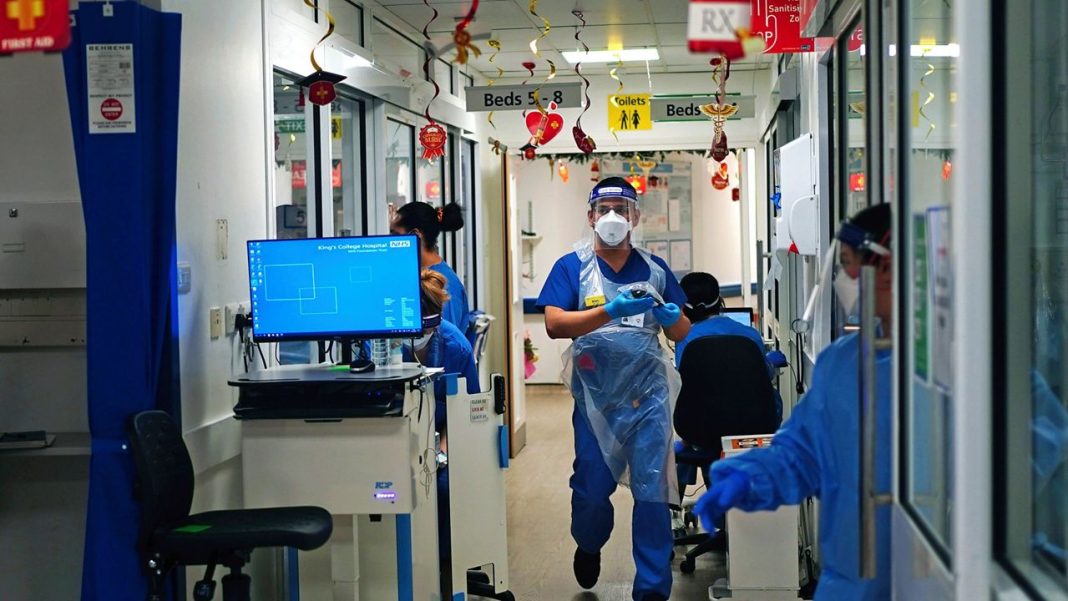
SciCheck Digest
Those who are not vaccinated against COVID-19 are more prone to serious illness and are dying at higher rates than those who are vaccinated. But partisan social media accounts, including a post by a member of former President Donald Trump’s campaign legal team, continue to misleadingly suggest the vaccines are unnecessary and discourage their use.
Full Story
Democratic Rep. Frank Pallone of New Jersey announced on Twitter on April 8 that he had tested positive for COVID-19.

Pallone — who is 70, which is in the age-range for an elevated risk for having a severe outcome — also wrote, “Thankfully, I’m vaccinated and double boosted so my symptoms are mild.”
Shortly after that, Jenna Ellis, a lawyer who served on former President Donald Trump’s legal team, responded with a tweet that read: “Why are these idiots still THANKING the vaccine? Many people who were NOT vaccinated also experienced zero or mild symptoms. Stop pushing the vax.” She also posted screenshots of the tweets on Facebook and Instagram.
This exchange captures the politicization of public health advice that has clouded the response to the pandemic from the beginning.
We’ve written before about the differences in COVID-19 outcomes for those who are vaccinated and those who aren’t. Generally, those who have been vaccinated fare better.
As the Mayo Clinic has explained, “fully vaccinated people with a breakthrough infection are less likely to have serious illness with COVID-19 than those who are unvaccinated. Even when vaccinated people develop symptoms, they tend to be less severe than those experienced by unvaccinated people.”
Data from the Centers for Disease Control and Prevention show significantly higher rates of hospitalization for COVID-19 patients who are unvaccinated compared with those who are fully vaccinated.
For Pallone’s age-range, specifically — adults 65 and older — the rate of unvaccinated patients per 100,000 who were hospitalized was 79, while the rate for vaccinated patients was 15 for the week ending Feb. 26, the most recent week for which the CDC has published data. Those rates were down from a high of 481 and 55, respectively, when the omicron variant of the virus that causes COVID-19 peaked in January.
Overall, the CDC has said, the two vaccines available in the U.S. that use mRNA technology — from Pfizer/BioNTech and Moderna — reduce the risk of hospitalization for those 65 and older by 94%.
Additionally, studies have shown that vaccines have been effective in preventing severe illness from COVID-19. A U.K. study in September found that, in cases of breakthrough infections, the odds of having no symptoms after the second dose of a COVID-19 vaccine increased by 94%.
“Almost all symptoms were reported less frequently in infected vaccinated individuals than in infected unvaccinated individuals, and vaccinated participants were more likely to be completely asymptomatic, especially if they were 60 years or older,” the study, published in The Lancet Infectious Diseases journal, found.
Another study conducted in the U.S. and released in July found that the risk of a fever and the length of time for the illness were both lower in vaccinated COVID-19 patients compared to unvaccinated patients. “Authorized mRNA vaccines were highly effective among working-age adults in preventing SARS-CoV-2 infection when administered in real-world conditions, and the vaccines attenuated the viral RNA load, risk of febrile symptoms, and duration of illness among those who had breakthrough infection despite vaccination,” the study, published in the New England Journal of Medicine, said.
Both of those studies predated the recent omicron surge, though, and neither primary vaccination nor natural immunity was very effective in stopping infection against the omicron variant. However, booster doses of the vaccine did increase protection, according to preliminary research.
So Ellis’ suggestion that there is little difference in outcomes from COVID-19 among the vaccinated and unvaccinated is wrong.
Taking that claim even further, though, is a meme that’s been circulating on conservative social media accounts saying, “the unvaccinated aren’t dying.” That’s patently wrong.
Similar to the rates of hospitalization for the unvaccinated compared to the vaccinated, data from the CDC shows that not only are unvaccinated people dying, they are dying at significantly higher rates than those who are vaccinated.
For example, as omicron peaked in January, unvaccinated people aged 5 and older had a 9 times greater risk of dying than those who were vaccinated with at least the primary series of doses, according to the CDC. The risk of dying from COVID-19 was 21 times greater for unvaccinated people age 12 and older compared to those who were vaccinated with the primary series and a booster dose.
Editor’s note: SciCheck’s COVID-19/Vaccination Project is made possible by a grant from the Robert Wood Johnson Foundation. The foundation has no control over FactCheck.org’s editorial decisions, and the views expressed in our articles do not necessarily reflect the views of the foundation. The goal of the project is to increase exposure to accurate information about COVID-19 and vaccines, while decreasing the impact of misinformation.










